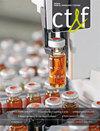用化学计量学分析催化裂化原料的紫外光谱预测其理化性质
IF 0.5
4区 工程技术
Q4 ENERGY & FUELS
引用次数: 3
摘要
应用偏最小二乘(PLS)的化学计量分析方法,研究了复合催化裂化(FCC)原料的紫外光谱与其理化性质之间的关系。在炼油厂样品验证过程中得到的预测误差证明了预测性质的准确性。这种新的分析方法可以在一次分析中获得关于FCC原料最重要的物理化学性质的详细信息,并且可以用作操作分析的有价值的工具。本文章由计算机程序翻译,如有差异,请以英文原文为准。
PREDICTION OF PHYSICOCHEMICAL PROPERTIES OF FCC FEEDSTOCK BY CHEMOMETRIC ANALYSIS OF THEIR ULTRAVIOLET SPECTRUM
Chemometric analysis by Partial Least Squares (PLS) has been applied in this work to correlate the ultraviolet spectrum of combined Fluid Catalytic Cracking (FCC) feedstocks with their physicochemical properties. The prediction errors obtained in the validation process using refinery samples demonstrate the accuracy of the predicted properties. This new analytical methodology allows obtaining in one analysis detailed information about the most important physicochemical properties of FCC feedstocks and could be used as a valuable tool for operational analysis.
求助全文
通过发布文献求助,成功后即可免费获取论文全文。
去求助
来源期刊

Ct&f-Ciencia Tecnologia Y Futuro
Energy-General Energy
CiteScore
1.50
自引率
0.00%
发文量
7
审稿时长
>12 weeks
期刊介绍:
The objective of CT&F is to publish the achievements of scientific research and technological developments of Ecopetrol S.A. and the research of other institutions in the field of oil, gas and alternative energy sources.
CT&F welcomes original, novel and high-impact contributions from all the fields in the oil and gas industry like: Acquisition and Exploration technologies, Basins characterization and modeling, Petroleum geology, Reservoir modeling, Enhanced Oil Recovery Technologies, Unconventional resources, Petroleum refining, Petrochemistry, Upgrading technologies, Technologies for fuels quality, Process modeling, and optimization, Supply chain optimization, Biofuels, Renewable energies.
 求助内容:
求助内容: 应助结果提醒方式:
应助结果提醒方式:


